5 industries that benefit from 3D product configuration
We live in a different reality since the beginning of the pandemic. Businesses experienced firsthand the need to have a solid online presence. From eCommerce experts to noobs, companies are getting ready for the online selling world. Businesses that have never targeted eCommerce as a selling solution are doing it. We bring you 5 industries that benefit from 3D product configuration.
3D product configuration – What is it?
First things first.
3D product configuration uses 3D models of products to create the perfect online visualization tool. In a configurator, customers can personalize items and view them in 360 degrees, making them seem as realistic as the actual thing.
A no-code configurator like the one Expivi provides, makes the integration and overall product innovation and maintenance easier since you don’t need your own team of developers to help you along the way.
Companies only need an eCommerce platform, 3D models of their products (that Expivi can create), and an idea of what they want the customer to configure. For example, a furniture company might wish the shoppers to be able to personalize the size and color of a sofa.
With 3D configuration, customers are empowered to create their own version of a product and visualize it as they would in real life. This brings many benefits such as reduced return rates, fewer storage needs, and decreased stock, just to mention a few.
5 industries that benefit from 3D product configuration
From transportation to medical equipment, we bring you 5 industries that benefit from 3D product configuration.
#1 – Transportation
From cars to trailers to boats to trucks, transportation is definitely one of the industries that benefit from 3D product configuration. It can help companies optimize their sales cycle by making prototyping much faster and opportunity closing much easier.
Instead of having to create new models for every new client, using a 3D configurator, transportation manufacturers only have to choose some options on the pre-built configurator, and the prototype is created and can then be sent to the client. If the client wants o change features, all sales teams have to do is just go to the configurator and change the options according to what the client wants and an updated prototype is created.
This saves a lot of time and other precious resources. Transportation companies can either have the configurator online, and the customers can create the version of the product themselves or offline (for internal use).
#2 – Furniture
Furniture is one of the industries that benefit from 3D product configuration. Why?
3D configurators can help them reduce product returns. When buying online, customers experience doubt, and when the product is costly, that doubt can be a deal breaker.
And why do customers return items?
- Product photography is not a faithful representation of the real thing;
- Not enough information about the products;
- The product was damaged or defective;
- The customer experienced buyer’s remorse.
By providing personalization and good visuals through 3D product configuration, you’ll be tackling this problem. Shoppers will be able to choose the material, size, pattern, and finishes without leaving the comfort of their homes.
Augmented reality also helps, since you’ll be empowering shoppers to place the configured item into their desired environment. No more trying to guess if the new sofa goes with the existing furniture. Customers can now see and experience it. Shopify has actually reported a 40% decrease in returns thanks to 3D visualization and AR, and with Expivi’s 3D product configurator and AR tech, furniture companies can reduce return rates.
#3 – Medical Equipment
Medical device manufacturers provide customization regularly. We can be talking about hospital beds or dental chairs, each practice will choose what fits best in their environment, and that usually means personalizing and customizing the products. They usually don’t do it online, but they can.
With a 3D configurator, companies that manufacture medical equipment can have all the options on their website, and shoppers can just choose the best combinations according to their requirements.
Businesses don’t need to have hundreds of pictures delaying their website or having to create one single prototype for each and every customer that wants one.
Customers will create their own prototype or the sales team can do it and show it to the prospective customers in seconds.
Medical equipment is definitely one of the industries that benefit from 3D product configuration.
#4 – Industrial Equipment
Companies that manufacture industrial equipment such as forklifts can use 3D configuration to make all their desired variations available online, so they are most surly one of the industries that benefit from 3D product configuration.
By integrating Expivi’s 3D configurator, industrial equipment manufacturers can empower their customers to create the product without having to visit the offices and the factory. All the possible combinations will be online and the buyer just has to choose options.
After choosing the right options for themselves, the customer pays and a Bill of Materials is directly sent to production that now has every element needed to manufacture the equipment.
A 3D product configurator means that companies no longer need to have prototypes of every single combination and they can instead have a fully functioning and engaging digital showroom. For businesses, this results in resource savings, and decreased stock and waste.
#5 – Containers
If you’re in the container business, you can use 3D product configuration to your advantage by showing prospective customers all product possibilities quickly and efficiently. Businesses that build containers know that it’s a struggle to showcase all the possible product variations online, but having an online presence is essential now.
With a 3D configurator, customers looking to get a container can build their own version of the product as they see all available options for each of the sides. Depending on what options you’d want to provide, you can allow them to choose size, color, window and door finishes, and other features.
This facilitates the customer journey, as well as the sales cycle. How? Well, sales teams will be able to put the product on a large screen and take the customer through each step of the building process with real-life-like visualization and personalization. Container manufacturing is most definetly one of the industries that benefit from 3D product configuration.
Did you like this article on 5 industries that benefit from 3D product configuration? Then read how it can also improve your product life cycle here






